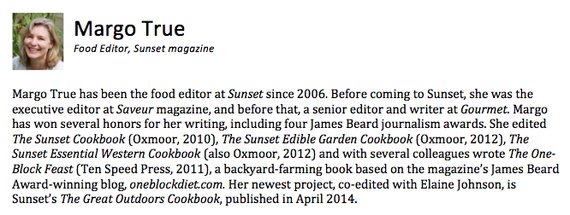
One of the worst dinners I've ever cooked was at a borrowed cabin in Lake Tahoe years ago. The stove had blown out, and dinnertime loomed--along with my hungry extended family. So Mom and I decided we'd cook our cut-up chicken on the charcoal grill in the front yard, a rusty, ancient Weber.
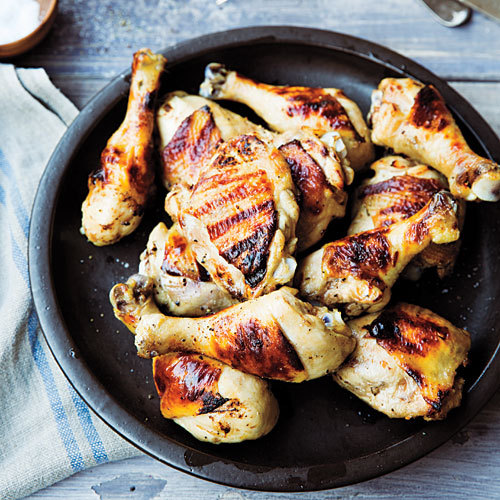
Sunset Recipe: Grilled Buttermilk Chicken
I didn't grow up grilling. For whatever reason, food in our household emerged from the oven or the stovetop. As we faced that Weber, Mom and I realized that we were clueless. We managed to light the thing, but the cooking grate was so gunked-up that our chicken stuck and tore. Then it caught fire. We didn't know what to do! So we clamped the lid on and the fire went out...we relit and kept going. Suffice it to say that dinner, served in the dark, was greasy, smoky, and charred, with slippery underdone bits. Thank God we had salad and cold pasta.
Many sessions at the grill over the years, and working on our big new cookbook, The Great Outdoors Cookbook, have turned me into an impassioned griller. How I wish I could flash back in time to that night in Tahoe, to teach myself the tips I went on to learn...but at least I can give them to you:
1. Clean your cooking grate. A dirty grate not only makes the food taste bad, it also makes it stick. The quickest way to clean it is to heat up the grill, then scrub it with a sturdy wire grill brush before you cook. Right after you take the food off, scrub it again to make it easier next time. And if the grate is really heinous, wait until it cools and give it a good soapy scrubbing in your kitchen sink.
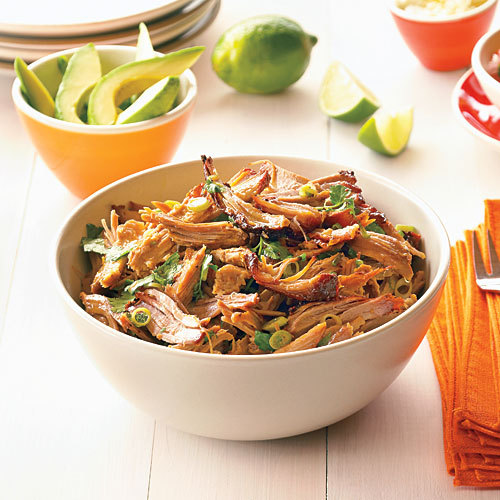
Sunset Recipe: Achiote-and-Orange Pulled Pork
2. On a charcoal grill: Clean out the ash at the bottom. Too much ash will choke the air flow, and no air flow means the fire will suffocate--oxygen feeds a fire and keeps it snapping. Before every cooking session, sweep the ash through the vents at the bottom of the grill by sliding the lever set into the ash-catcher.
3. On a charcoal grill: Get to know your vents. They're on the lid as well as underneath the grill, and help you control the temperature (on a gas grill, just use the knobs to increase or decrease the heat). Open both sets of vents fully and air flows in, feeding the flames; close them, and the fire will almost immediately go out. Usually you will have both sets open all the way.
4. On a charcoal grill: Use plenty of briquettes, and know how to light them. Lord knows what Mom and I did at Tahoe--I think we just dumped half a bag onto the grill and kept lighting them with oven matches until they caught fire. Here's the easier way: Use a chimney starter and fill it almost full (about 60 briquettes). Scrunch up 2 full sheets of newspaper and put them in the base; then ignite them with a match or butane lighter (don't use nasty lighter fluid). Let the briquettes burn until they're covered with a fine film of ash. Then spread them out on the fire grate and set the cooking grate over it.
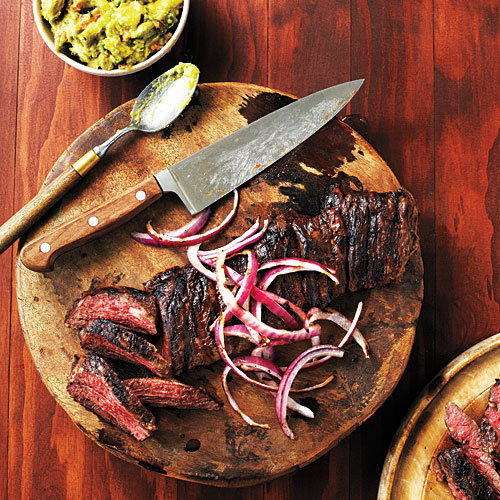
Sunset Recipe: Carne Asada Con Mojo
5. Oil your cooking grate. This will also keep the food from sticking. The best way to do this is to heat the grill and then, using tongs, wipe the cooking grate with a wad of paper towels that you've drizzled with vegetable oil.
6. Know how to guesstimate the temperature of a grill. Not every grill has a thermometer built into the lid (our Tahoe model did not). If yours doesn't, use the hand test: Hold your hand 5 inches over the cooking grate. If you can hold it there for only 2 to 4 seconds, it's hot (450° to 550°). If 5 to 7 seconds, it's medium (350° to 450°). And if 8 to 10 seconds, it's low (250° to 350°).
7. Grill small food, like chicken pieces, steak, and burgers, over direct heat--meaning the fire is right beneath the food. On a gas grill, all burners should be on, and if you're grilling over charcoal, aim for an even bed of coals. This will cook your food all the way through by the time the outside is nice and brown. (For our Tahoe chicken, I should've gone for direct medium heat).
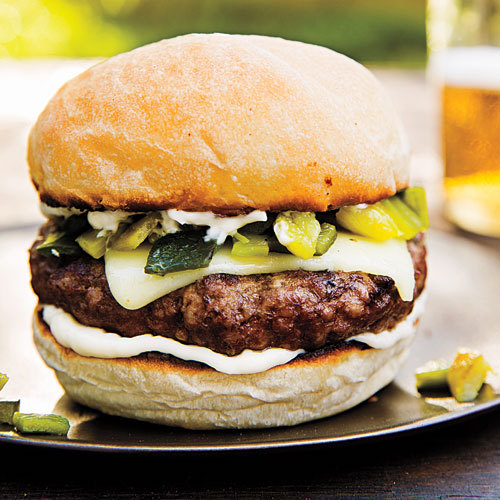
Sunset Recipe: The Hatch burger
One of the best burgers I've had was made by Tyler Florence out under the trees at Sunset. To watch him teach a beginner how to grill that burger, click here.
8. Grill big food, like roasts or ribs or whole chicken, over indirect heat--meaning the fire burns to one side of the food (or on both sides) rather than directly beneath, cooking the food gently and slowly. If you set a hunk of protein over direct heat, it will char on the outside before it's cooked through. For indirect heat on a gas grill, turn off the burner underneath the food. On charcoal, set the food over a space free of coals.
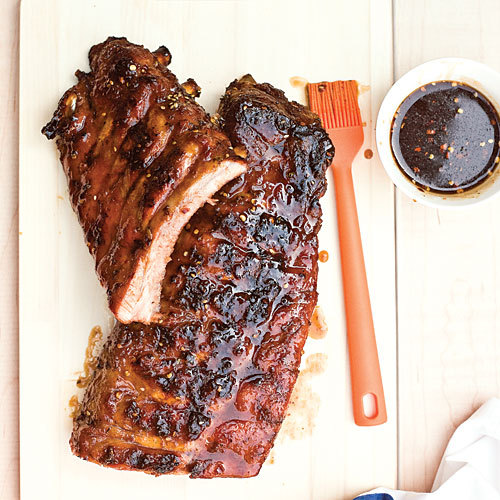
Sunset Recipe: Grilled Baby Back Ribs with Sticky Brown Sugar Glaze
9. Keep the lid closed as much as possible. It's tempting to be constantly checking out your food to see how it's doing, but, especially on a gas grill, the heat can drop by 100° when you lift the lid, and take several minutes to climb back up.
10. Do not let flames touch your food. They may look dramatic, but will give whatever you're cooking a burnt, greasy flavor. If you see flames leaping, don't squirt them with water. That can splash ash up onto the food. Instead, close the lid to choke off the fire. If that doesn't do the trick, move the food over a spot with no direct heat--either a turned-off burner or a spot cleared of coals.
And lastly: I wish I'd known, as I was freaking out over that blackened pile of chicken years ago, that it's possible to get the hang of grilling fairly quickly. And once you do, it's a thrill.
So why not start practicing? For a summer's worth of Sunset grilling recipes, visit sunset.com/grilling.
